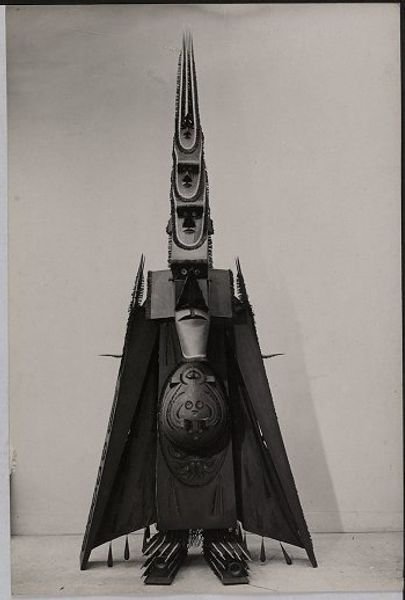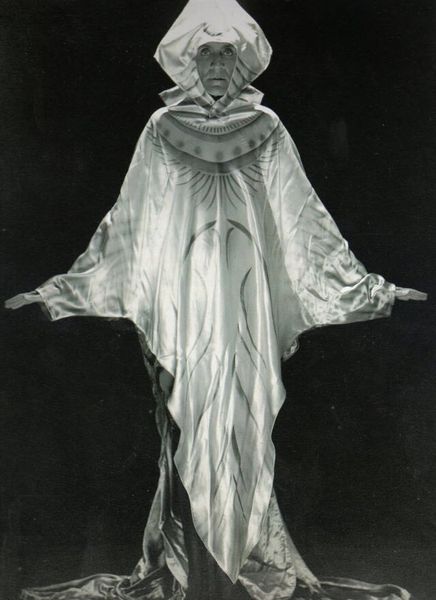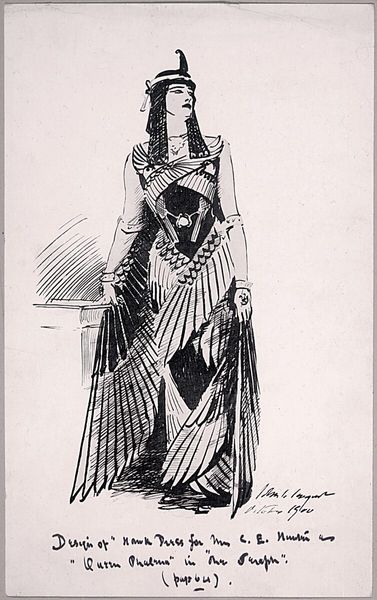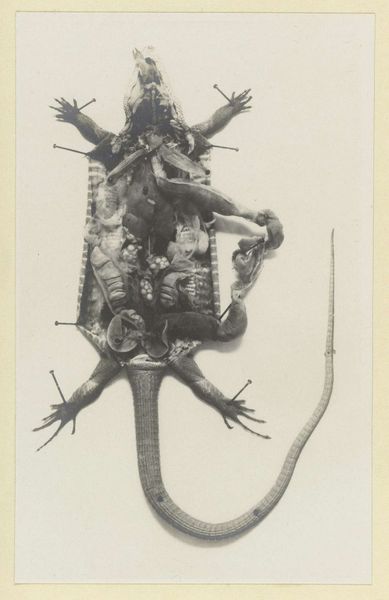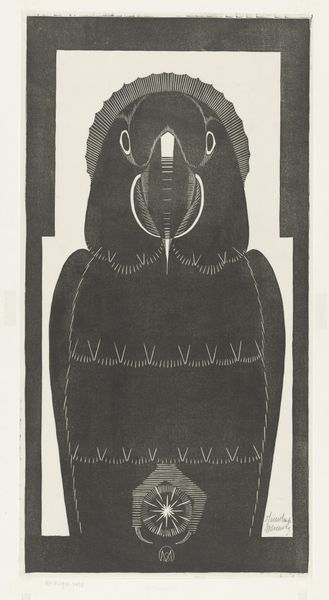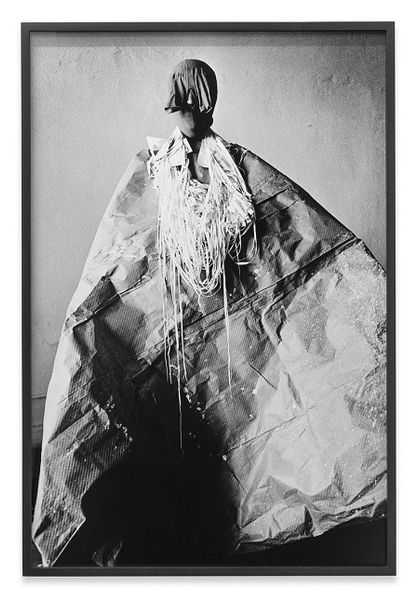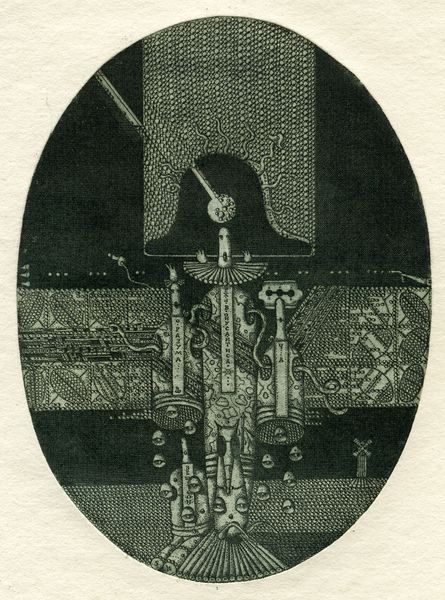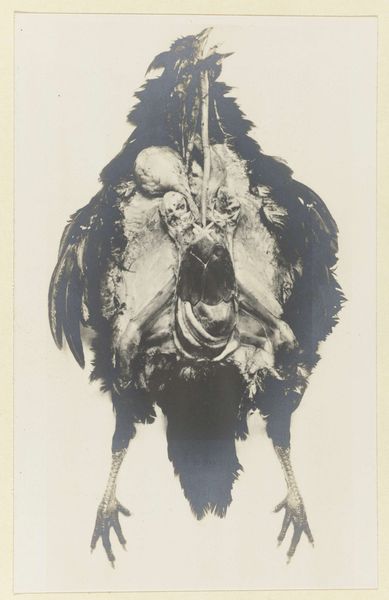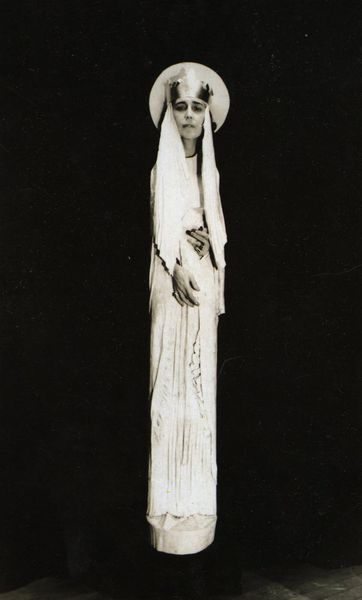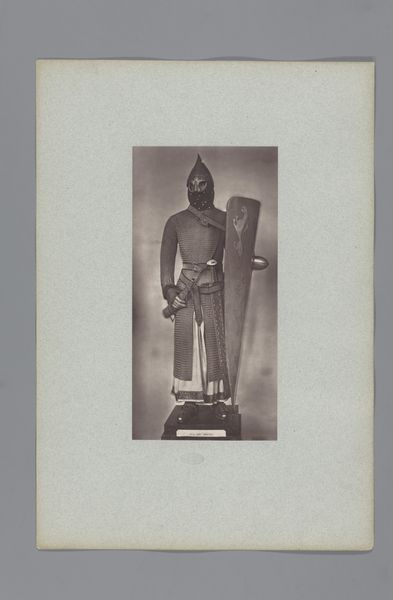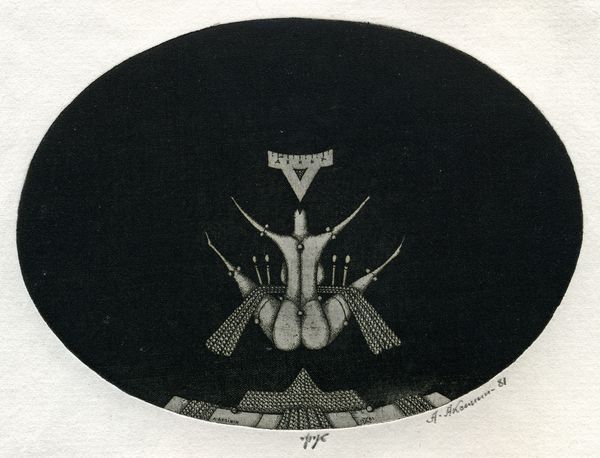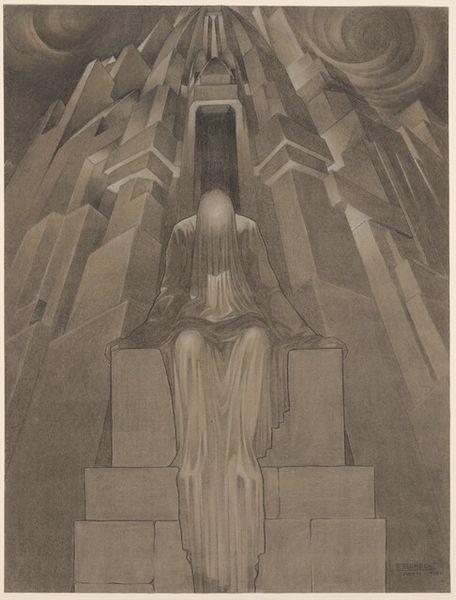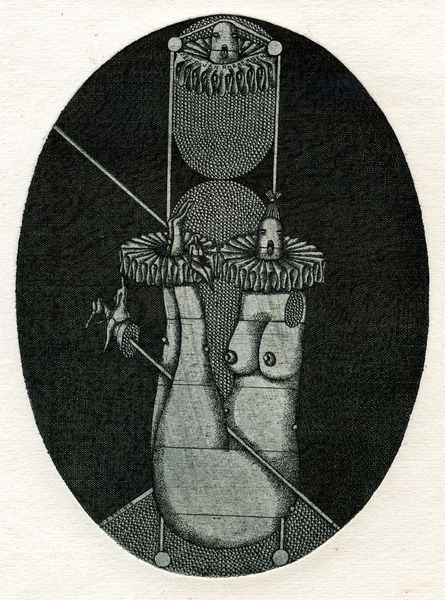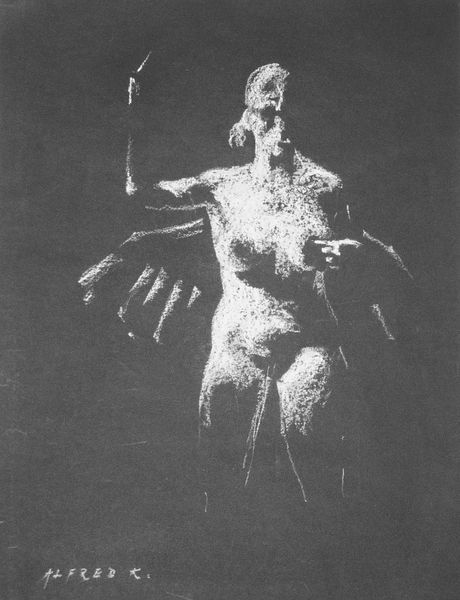
mixed-media, performance, photography
mixed-media
performance
black and white photography
sculpture
archive photography
photography
costume
surrealism
Copyright: Jean Benoit,Fair Use
Editor: So, here we have Jean Benoit’s "Costume for the Execution of the Testament of the Marquis de Sade" from 1950, in mixed-media and photography. It’s incredibly unsettling, this figure looming out of the darkness. What’s your take on it? Curator: Unsettling is precisely the word. I see this piece as a powerful articulation of Surrealism's engagement with taboo subjects, particularly through the lens of Marquis de Sade’s philosophies. The figure becomes a visceral representation of repressed desires and societal constraints, wouldn’t you agree? How does the costuming inform its purpose and identity? Editor: Well, the starkness of the costume is what really stands out. It's so obviously artificial but also disturbing. What’s with the central pendant—that barred window motif? Curator: The window motif can be read as a literal reference to Sade’s imprisonment, but also, metaphorically, as the limitations imposed on thought and expression by societal norms. Benoit, I believe, is trying to visualise not just Sade himself but the radical potential inherent in transgression and, by extension, what that means in the aftermath of the Second World War. How do you think the medium contributes to its power? Editor: That makes sense, and in mixed-media photography, the visual weight becomes almost sculptural... So, would you say Benoit is commenting on societal control and individual freedom? Curator: Precisely. And pushing us to examine where we draw lines between liberation and license. It’s uncomfortable, isn’t it? Which, arguably, is the entire point of work like this and an ongoing battle within modern-day moral philosophy. Editor: Absolutely. The artwork’s complexity really sparks conversation about freedom of expression, its limits and implications. Thank you. Curator: My pleasure. It's a testament to art’s enduring ability to challenge us, even now, to reassess established social and cultural constructs.
Comments
No comments
Be the first to comment and join the conversation on the ultimate creative platform.
